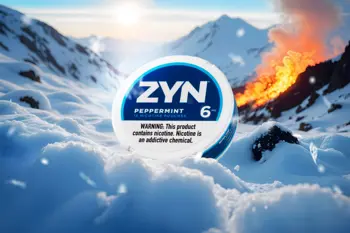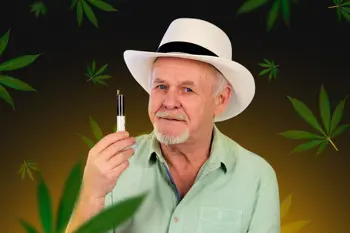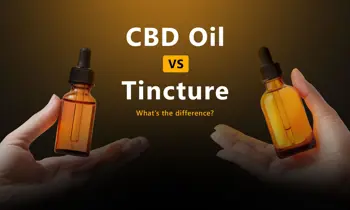Definition of smoke
The Wikipedia definition of smoke is “a collection of airborne solid and liquid particulates and gases emitted when a material undergoes combustion or pyrolysis, together with the quantity of air that is entrained or otherwise mixed into the mass.”
Burning a substance drastically alters its chemical composition; smoke is made out of visible molecules of carbon, molecules of the substance that is getting burned, and other byproducts of combustion. In other words, lighting something on fire produces lots of substances, many of which are dangerous to inhale.
Definition of vapor
According to Wikipedia, vapor “is a substance in the gas phase at a temperature lower than its critical temperature, which means that the vapor can be condensed to a liquid by increasing the pressure on it without reducing the temperature.”
In other words, vaporizing a liquid will alter its state, but vapor will comprise the same molecules as the substance in its liquid phase.
Now technically, what is produced when we vape isn’t vapor at all, but aerosol. Wikipedia defines aerosol as “a suspension of fine solid particles or liquid droplets, in air or another gas.” The e-liquid, when vaped, turns into particles that get suspended in the air and fall to the ground quickly. Because the particles are liquid, unlike the solid particles in cigarette smoke, they don’t pose the same risks to the lungs and cardiovascular system.
Since just about every vaper uses the (slang) term “vapor” and not the scientifically precise term “aerosol,” we’re going to stick with “vapor” too, especially since the technical difference doesn’t affect the points we’re discussing.
Is there such thing as “vape smoke”?
There's no "vapor smoke," and someone who vapes is not smoking vapor. Regardless of how vaping or vapor looks, smoke is something totally different. It's understandable if someone is concerned or curious about vapor's effect on health, or even if second hand vapor is dangerous. But let's call a spade a spade and not a gardening tool.
How are smoke and vapor different?
Lighting a cigarette will produce smoke while vaporizing e-liquid will produce vapor (aerosol). Outside of their visual similarities, smoke and vapor don’t have much in common. They are very different in composition and behave in very distinct ways. Here’s how these substances differ from each other in a nutshell.
Composition
When it comes to tobacco and e-liquid, the only thing they have in common is nicotine. Tobacco smoke contains thousands of chemicals, with 70 of them being proven carcinogens and many more being unhealthy to inhale.
Although vapes do not produce water vapor, vaporized e-liquid comprises vegetable glycerin, propylene glycol, nicotine, and food-grade flavorings. With the exception of nicotine, everything that’s included in e-liquid is safe to ingest, according to the CDC. Safety for inhalation has not been proven, but neither has risk. The science is still coming in.
Smell
The smell of smoke lingers in the room for a long time, unlike vapor. Smokers might not notice it that easily, but vapers and non-smokers can recognize the smell in a closed room for hours after a cigarette has been smoked.
Vapor clouds might be denser and dissipate slower—i.e., stay visible in the room for a longer time—but the smell will be much more pleasant and go away much more quickly.
Residue
Smoking inside a room will eventually stain fabrics, walls, and furniture. One of the culprits behind that is tar, the toxic resinous mixture that makes smoking so deadly, and is also notorious for staining everything it comes in contact with. Other byproducts of combustion, such as carbon monoxide, will work alongside tar to give your walls this dirty, yellow tint.
The PG and VG in vapor may create a thin, blurry coating on glass surfaces, but it cleans up easily. It will not turn your walls and fabrics yellow over time and won’t make furniture look older than it actually is.
Temperature
The temperature of the cigarette coal is around 1112 F (600 C) when resting, rising to 1652 F (900 C) when taking a puff. While smoke rapidly reaches room temperature when inhaled and exhaled (mainstream smoke), the smoke that gets produced on the coal itself (sidestream smoke) will raise the peripheral temperature, especially when the cigarette is becoming smaller.
E-cigarettes, on the other hand, vaporize e-liquid at much lower temperatures, usually not higher than 482 F (200 C). As a result, the exhaled vapor is much cooler, coming out at a temperature lower than the surrounding room air. Try exhaling on your arm, and you’ll see for yourself.


















